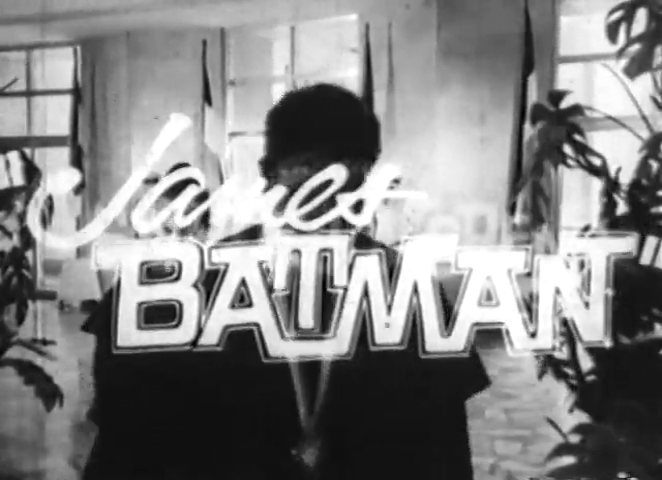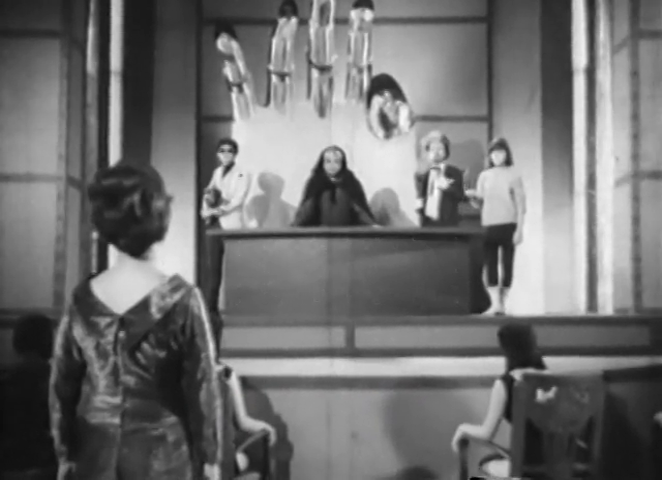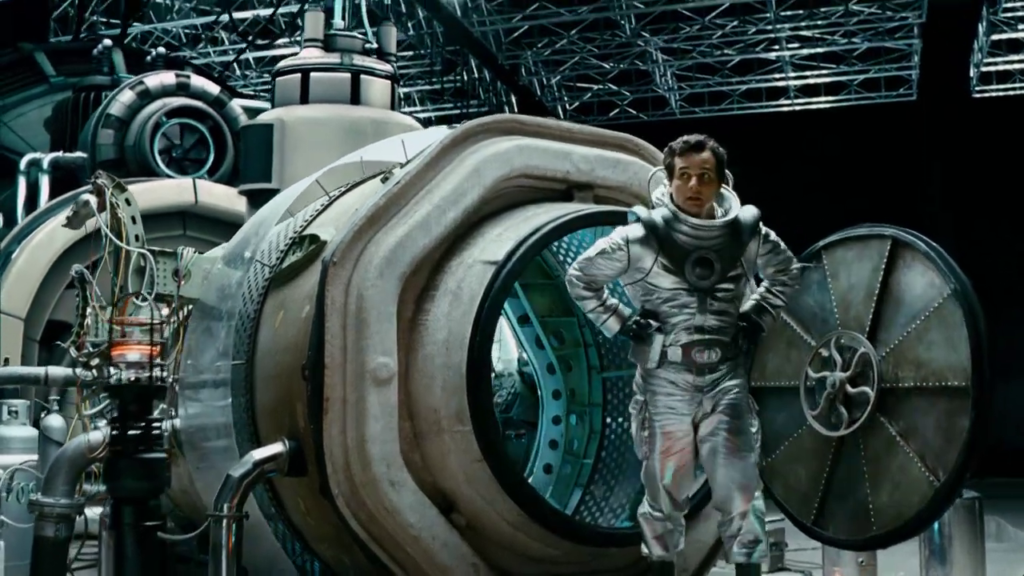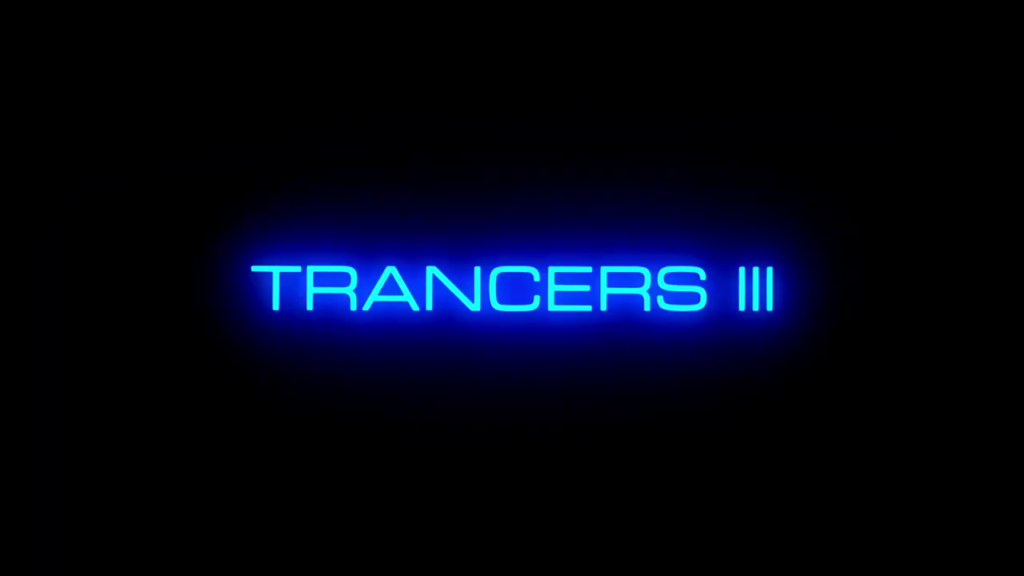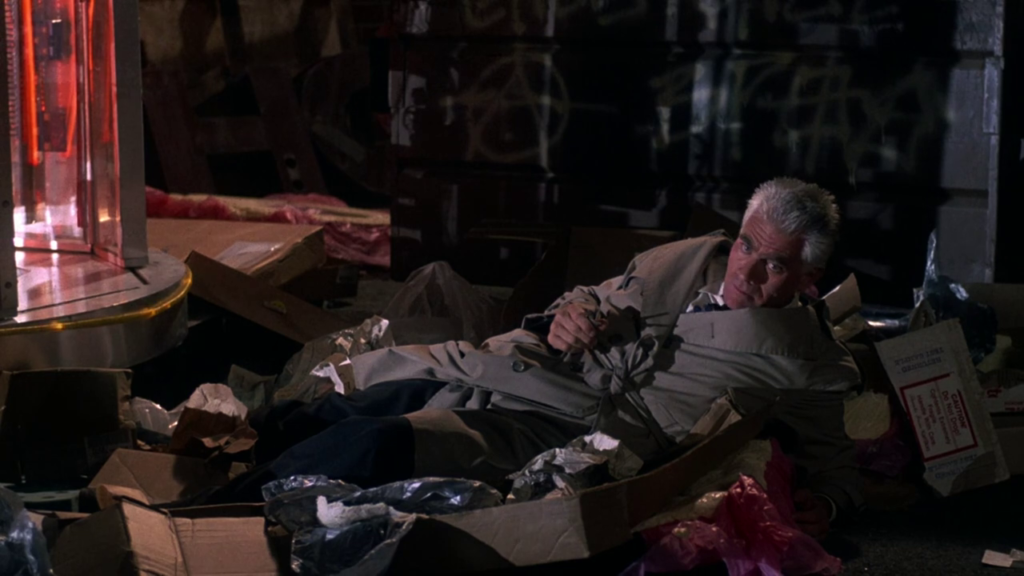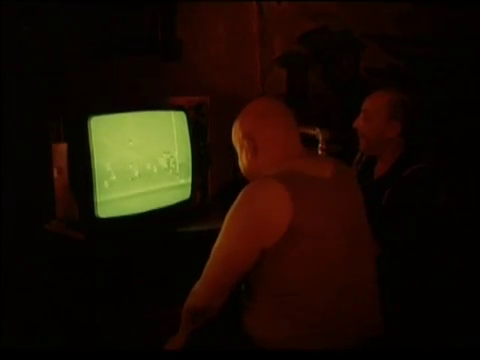-
#478 – James Batman (1966)
James Batman (1966)
Director: Artèmio Marquez
Film review #478
SYNOPSIS: The evil CLAW organisation is threatening to destroy the nations of Europe and Asia unless they submit to the “red government.” With hope dwindling, the combined nations call upon two of the world’s greatest heroes to hep them out…James Bond and Batman.
THOUGHTS/ANALYSIS: James Batman is a 1966 superhero crossover film from the Philippines featuring James Bond and Batman. It will not surprise you to know that this crossover was unlicensed, and the characters were used without permission. The film opens up with a convening of nations (I guess meant to be the United Nations), where the countries of Europe and Asia are explaining that the evil CLAW organisation has given them five days to submit to the “red government” or be destroyed. A member of CLAW turns up to terrorise the meeting, sending panic through the nations of the world. In response, the only option seems to be to call upon two of the world’s greatest heroes: James Bond and Batman. This unlikely duo must learn to work together to defeat CLAW and save the world. The plot of the film is fairly straightforward and just revolves around James Bond and Batman (and Robin) saving the world, like you’d expect really. It is probably obvious that the makers of the film did not have the rights or licence to use the Batman or James Bond characters, but back in the pre-internet times, people could get away with making these films and even releasing them in cinemas without the licence holders ever knowing about them, leading to quite a few of these type of films being made far way from Hollywood’s purview. The film is basically a comedy/satire, as it presents the titular heroes as buffoons, and emulates many elements of the 60’s Batman series. The climax of the film does take quite a dramatic and serious tone though, as the villain’s daughter pleads with him not to basically destroy the world. As mentioned, the story is pretty straightforward and essentially moves between James Bond and Batman getting into various hijinks, and overall the film holds itself together fairly well: the characters have their own arcs, the action and comedy are well paced, and even though it is obviously a cheap production copying other material, it does make some effort to replicate this material somewhat faithfully.
Obviously the main selling point of the film James Batman is the cross-over between the two main characters James Bond and Batman. As mentioned, the film is mostly comedic in tone, and their characters mostly act as buffoons for comedic effect. Batman and Robin work well together, as Robin winds-up Batman and Batman reprimands him with some slapstick violence. Apart from the personalities, they are represented surprisingly accurately, with the costumes, bat cave, and batmobile making appearances. James Bond is similarly portrayed, but his original character is obviously a lot more serious than the Batman of the TV series his is based off, so the difference is more marked. He still feels like Bond though, as the film parodies certain mannerisms of his character and scenes from the films. Interestingly, 007 is only ever referred to as “James” throughout the film, surely they can’t be scared of using his full name (or codename) but okay with using every other aspect of the character. The rest of the characters aren’t too interesting, but you’re not watching the film for them, so it’s not much of an issue.
I am quite impressed with how the film is made, particularly with regards to its recreation of the main characters: Batman and Robin have outfits that resemble the ones work in the 60’s TV series fairly accurately (except Batman’s cape is striped for some reason). There’s also a very good attempt at recreating the batmobile from the same series. The film even uses the themes from the Bond films and Batman series, although it swaps them around sometimes so you’ll be hearing Batman’s theme when Bond is running around, which is pretty funny. There’s clearly a fair amount of effort and consideration that has gone into this film, and some competency with the camera work and sets. The fight scenes are pretty bad, and the punches clearly don’t hit anyone most of the time, but I think there’s a very basic sense of choreography that the actors are following. James Batman is, overall, a silly low-budget knock-off that nevertheless has a fair amount of effort and competency put into it. It’s still a bad film, but you can have a laugh and be entertained by it’s ridiculous fight scenes and bizarre concept. The acting is alright, and provides enough entertainment and action to live up to the character’s names…well, in the most ridiculous way possible.
-
#477 – Star Trek VI: The Undiscovered Country (1991)
Star Trek VI: The Undiscovered Country (1991)
Film review #477
Director: Nicholas Meyer
SYNOPSIS: Following an explosion on the Klingon moon of Praxis, the Federation and Klingon Empire move for peace talks. This sits uncomfortably with many people on both sides, including Captain Kirk himself, who still blames the Klingons for the death of his son. Kirk and the Enterprise are sent to meet the Klingon chancellor Gorkon to escort him to the peace conference, but Gorkon is assassinated, and all the evidence points to someone onboard the Enterprise is responsible. Kirk and Dr. McCoy are sentenced to hard labour, and Spock and the rest of the crew must find evidence to exonerate them and rescue their captain before full scale war breaks out between the Federation and the Klingon Empire.
THOUGHTS/ANALYSIS: Star Trek VI: The Undiscovered Country is a 1991 sci-fi film, and the sixth and final film featuring the cast of the original TV series. The film opens up with now Captain Sulu on the U.S.S. Excelsior, witnessing a huge explosion on the Klingon moon of Praxis. The moon was the source of the Klingon Empire’s power, and the resulting explosion will also deplete the Klingon homeworld’s ozone layer within the next fifty years. As a result, the Klingon’s offer peace talks with the Federation to resolve the long-standing war between the two. However, there are those on both sides who are still sceptical of any attempt of peace, including Captain Kirk, who still blames the Klingons for the death of his son. Spock volunteers Kirk to meet Klingon Chancellor Gorkon in the neutral zone, and escort him to peace talks on Earth, but Kirk is still less than pleased about the whole situation. The film has a pretty solid story, and it’s theme is explored through both the setting and the characters rather well. The story is obviously rooted in the time of the end of the cold war, and the uncertainty of the future now that these opposing sides are no longer enemies. Like much sci-fi, it’s reflection of contemporary affairs in the future allows the possibility to explore these affairs without being chained to “real” people or places. The story gets underway quite fast, and the crew are out of spacedock in about twenty minutes, which is nice. The film on the whole does have an operatic feel, and there are many scenes of protracted and extensive dialogue, with a lot of quoting classical literature between the parties. The awkward diplomacy attempts to create a tense atmosphere between the characters, and for the most part it works, but it could certainly feel a bit overblown and meaningless to viewers who can’t follow all of these quotes. That said, there’s a fair amount of more direct action and intrigue in the story too, so there’s plenty of substance throughout the film that maintains a good sense of pacing and entertainment.
Being the final film starring the original crew, The Undiscovered Country makes an effort to give the characters a good send off and resolve any loose threads. Kirk dealing with the loss of his son and blaming the Klingons is one such thread, but one that wasn’t really mentioned in the previous two films (which were a bit more comedic in nature, so it probably didn’t fit the tone). The rest of the crew are close to retirement, and so the scene is set as this being their final mission before they hand over to a new generation: this again being reflected in the story that forces the older characters to accept a new era. There’s a solid performance all-round as the characters engage in heavy dialogue, but also some low-key funny moments that aren’t shoved in your face like in Star Trek V. Lt. Valeris as the new character is fine, but her arc doesn’t really come to a conclusion, and her motivations by the end of the film are a bit vague. The same can be said of everyone who is trying to stop the peace talks: why do they want to continue as they are? Why are they working together? That part of things doesn’t tie up quite as neatly as it needs to. General Chang as the villain is pretty cool, but the fact that he speaks most of the time in classic literature quotes can get a bit distracting. Apparently some of the actors were unhappy with their characterisations: Shatner thought Kirk was portrayed as too prejudiced, and Michelle Nichols refused to say lines that alluded to racist undertones regarding the Klingons. With Kirk, I can totally see the problem with Kirk’s character: his hatred of Klingons does come a bit out of nowhere in the sense it isn’t really brought up in the two previous films, but you can also see why he would hate them after they killed his son. The drama-heavy tone of the film I suppose necessitated exaggerating these elements, and it definitely provides a character arc that Kirk works through to the other side to provide a message of hope. Gene Roddenberry, the creator of Star Trek, apparently also did not like these prejudices, as his vision of the future that Star Trek provides is one where such prejudices have been overcome. While I think some of the prejudices and attitudes the film presents are a bit out-of-character, I don’t think they disrupt the vision that Star Trek provides, and it definitely does a good job of reflecting contemporary attitudes and how people can struggle to deal with a changing world.
This film had a tough time getting made: after the poor reception of Star Trek V, the budget for this film was slashed, as it was seen as very much a risky venture. Scripts about a prequel, a film which essentially killed off the cast, and a crossover with Kirk meeting Picard (which eventually became Star Trek Generations) were proposed, but eventually the story was developed by Leonard Nimoy and Nicholas Meyer, who wrote Star Trek II. Given the tight budget, there’s a lot of sets and scenes set aboard the ship in low-light corridors and rooms to hide the lack of detail. This isn’t too much of a bad thing, as the dramatic lighting supports the drama-heavy script. There isn’t a lot of variety in the settings due to the aforementioned budget, but it makes do. As a result of all this, it definitely feels like an episode of the TV series, with most of the action being set on a ship, the dialogue heavy scenes, and the even pacing. With this in mind, despite a number of problems, The Undiscovered Country feels distinctly Star Trek, and provides a solid final outing for the beloved ship and crew. It is a bit overblown in it’s dialogue sometimes, and the prejudices and attitudes may seem a bit over-the-top to better serve the story, but at it’s heart it has a strong message, and ends the adventures of the original crew on a high note of hope.
-
#476 – Man From the Future (2011)
Man from the Future (2011)
Film review #476
Director: Cláudio Torres
SYNOPSIS: João Henrique, nicknamed “Zero” is a renowned scientist, who is attempting to develop a new infinite source of energy. When he activates his experimental machine, he accidentally finds himself transported back in time to 1991…on the day the love of his life dumped him. Determined to change what happened that day, he goes about trying to change the events that unfolded, but his meddling turns out to have unintended consequences, and manages to complicate his life in ways he never even imagined…
THOUGHTS/ANALYSIS: Man from the Future (O Homem do Futuro) is a 2011 Brazilian sci-fi comedy/romance film. The film opens up with João “Zero” Henrique, a physicist, about to test a machine that will hopefully create an unlimited new source of energy for the planet. To prove that it is safe, he sits himself at the centre of the machine. However, something unexpected happens, and Zero wakes up in the year 1991, on the day his life changed forever: it is the graduation dance, and Zero is unceremoniously humiliated and ditched by the love of his life; an event that defines his life from that point. Desperate to change what happened, Zero goes to find his younger self and convince him to do things differently. In a very expected and familiar story, he changes events in his own past, which leads to a lot of unintended consequences that makes things a lot worse in the present. The story is obviously fairly typical for a time travel film; with going back to the past altering the future in unanticipated ways. The film is split into a typical three-act structure between going back to 1991, the altered present, and back to 1991 again, and the structure helps stop things from getting confusing. On the other hand, there’s not too much unique that the film offers by playing it so safe. The film obviously (and like most time travel films) takes some cues from Back to the Future, but Man from the Future really strays into copying in some respects; in particular, the key setting of the film being a graduate dance as the turning point in the characters lives. The mixture of sci-fi, romance and comedy feels a bit uneven at times, and it wanders a bit loosely between them as a number of issues are thrown up that never seem to be resolved. For example, there’s a side-issue about trying to prove that “love is a fundamental part of the universe” that gets mentioned, but nothing is ever really done about it.
Zero, the main character, is a bit of a flawed protagonist: his life is constantly overshadowed by being humiliated and ditched by his first love Helena at their graduation dance, and it still impacts him over twenty years later. Nevertheless, he is a professor, and has loads of funding for his research, so it’s hard to feel too sorry for him in that regard. You do see his character change as he realises his meddling in the past only made things worse, and he becomes determined to set things right, making him a more likeable character by the end. Helena as Zero’s love interest doesn’t really have too much character other than said love interest, but her acting is pretty good. It is a bit weird how she just seems to be madly in love with Zero even though we never really see how their relationship develops or how she gets to that point, and it seems like she is in love with him simply because the plot needs her to be. The rest of the characters have their own personalities and are acted well, but don’t play too much of a part in the film.
The tone of the film is often quite difficult to figure out: apart from the mix of sci-fi, romance and comedy constantly competing rather than supplementing one another, there’s also the question of who the film’s target audience is. I don’t think it is older viewers because they would have already seen Back to the Future, and would undoubtedly recognise it as derivative of it (I’m not sure how popular BttF is/was in Brazil). It can’t really be seen as a satire or parody of it either, because despite the similarities, it never does anything to undermine the premises and tropes of time travel films, but rather just copies them. I’m not sure the main character being in their forties really appeals to a younger demographic either, although a few raunchy shots and a youth-oriented soundtrack certainly suggests a younger demographic. Man from the Future, on the whole, is produced and made well, with decent acting, and sets and props that are convincing in their scale and polish. However, it doesn’t offer anything unique in terms of its story, and it’s crossing of genres makes it seem muddled, but overall as a bit of light entertainment, it’s easy enough to sit through.
-
#475 – Trancers III (1992)
Trancers III (1992)
Film review #475
Director: C. Courtney Joyner
SYNOPSIS: Jack Deth is trying to make a life for himself after being stranded in Los Angeles. However, he is timejacked to Los Angeles 2247, where it turns out a new wave of trancers have been devastating the future. Jack is assigned to go back to 2002, when the trancers were first developed, to wipe them out at the source…
THOUGHTS/ANALYSIS: Trancers III is a 1992 sci-fi film, and the third film in the Trancers series of films. In the beginning, we catch up with Jack Deth not doing too well for himself after the end of the last film, as he now works as a private detective that finds people cheating on their partners, while his own marriage is heading to a divorce. While out at work, he is kidnapped by a trancer and taken to the year 2247, where he finds out that a new wave of trancers has been created and is waging war against the ruling council that he formerly worked for. He is assigned the task of travelling to 2005, when these trancers were first developed, and wipe them out at the source. The Trancers films centre around the use of a technology in the future that allows a person to be sent back “down the line” (through time) to inhabit the body of their ancestor. This gimmick was explored with some consideration in the previous films, but isn’t really a part of this film; which is a shame because it was the only really unique thing about the films. These films feel very much like a cheap terminator/Blade Runner venture, and again, Trancers III is no different. With a runtime of just over seventy minutes, there’s not really much time to get anything complex up and running, and the film settles for a bunch of action scenes and mindless violence that never really forms into an overarching story. There is the plot concerning Jack’s attempt to stop the formation of the trancers army, but it never seems to come to the forefront of the film, and everything feels a bit disconnected.
The characters are all pretty familiar, with a mix of the characters from the previous films, and other characters which are very familiar action movie tropes. Jack Deth is still the grizzled rouge-ish hero from the previous films, with his inexplicable ability to have women much younger than him fawning over him. He’s a mix of action movie tropes and doesn’t really offer anything unique in that respect, although Tim Thomerson does a good job of over-acting the role, which is pretty good fun. The villain is Col. Daddy Muthuh (slight play on words of “Daddy Mother” if you hadn’t noticed), who has created this new trancer army, and acts as their parental figure (hence the awful pun name). He’s a fairly over-the-top and clichéd villain, but with a name like “Daddy Muthuh” alongside “Jack Deth,” how seriously can you really expect to take this film? The rest of the characters are again pretty typical, and the constant conflict between the women in Jack’s life makes a silly distraction, and constantly raises the question why they are attracted to this man.
Despite being a low budget production typical of Full Moon Entertainment, there’s some decent effort clearly put into some of the elements of the film. The sci-fi props look good and sturdy, and some of the fight scenes are decently choreographed, and display a fairly entertaining amount of action. It does feel like a departure from the noir-esque style of the first two into a more cut-and-paste action movie, and the film loses much of it’s uniqueness in that transition. There’s a few gory moments too that you would not have seen in the previous films. Trancers III has some decent qualities to it, in particular some of the aspects of its production and some of the acting, but there’s very little substance beyond what viewers will have seen previously. Obviously with characters named Jack Deth and Daddy Muthuh you should not be expecting a super serious story or experience, but the odd pacing, short runtime and the lack of a solid set-up amidst the confusing multiple times makes a lot of the film fall flat. It has some redeeming features to make it watchable, just don’t expect to be fully entertained or get anything out of it.
-
#474 – A Visitor to the Museum (1989)
A Visitor to the Museum (1989)
Film review #474
Director: Konstantin Lopushanky
SYNOPSIS: In a seemingly post-apocalyptic world, a man visits the shoreline from the city to visit a museum that is only accessible one week every year when the tide is low enough. He is following the rumour that somewhere inside is a portal to another world, where one can escape the hell that is the one he lives in has become…
THOUGHTS/ANALYSIS: A Visitor to the Museum is a 1989 soviet post-apocalypse film directed by Konstantin Lopushanky. The film is set sometime after an unspecified ecological disaster has ravaged the planet: many people have become mutants and are locked up in reservations to be used as slave labour and such, while what remains of the unmutated live in cities. We aren’t given too much detail on the state of the world or what happened to it, but the backstory isn’t really important: like a lot of post-apocalypse films, how the world ended doesn’t mean much when you’re just trying to survive day-to-day in a new harsh world. A man visits the coast from the city hoping to visit a museum of relics from the old world buried beneath the sea. The path to the museum is accessible only once a year when the tides are low enough, and the man is following a rumour that within the museum is a portal to another world to escape the horrors of the one he currently lives in. The story of the film is very abstract and never hinges on definitives: a lot of the plot is casually explained as the man has tea with the family he is staying with, and they talk about the state of the world as very much matter-of-fact, in contrast to the true hell that the mutant “degenerates” are constantly experiencing.
Konstantin Lopushanky, the director of this film, worked on Andrei Tarkovsky’s Stalker film, and it definitely shows: the themes of isolation and desolation in a post-apocalyptic world and trying to find a way out are shared between the two, and there are very similar camera techniques and effects used to convey this. Lopushansky, however, always feels like Tarkovsky’s apprentice, and never really surpasses the master that is Tarkovsky, or offer anything different. The weak links in the film are definitely how the story reveals itself, and offers very little direction or clue to what is going on. Obviously, the film is meant to be ambiguous and centres around a loss of meaning in the post-apocalypse, but the film feels a bit too ambiguous in centring the main character and certain aspects of the film so you never know where they are or what’s going on. The plot points that do offer something include the contrast between the unmutated, who are unbothered atheists, and the God-fearing “degenerates” who scream out bible verses and quotes, even though none of them know what any of it means because the meaning of the bible has been lost.
The production of the film feels very considered, and again obviously taking inspiration from Tarkovsky. The outdoor location shots looks great, particularly the mountains of garbage and rubble that our protagonist traverses, which is apparently what most of the world looks like now. The landscape shots that emphasise the isolation of the protagonist abandoned amidst nature also works well. There’s also the large crowds of mutants in certain scenes give off an eerie feeling, as they move and act in seemingly genuine terror. Lopushansky uses the colour red to completely light many of the scenes, and it provides a good bit of consistency throughout.
This is definitely not a feel-good film: it is the end of the world, and we’re meant to feel it, the only hope of escape is this absurd rumour the protagonist is chasing about a portal to another world, which as the only option, shows just how bad things are, but again the unmutated just sitting around and discussing over tea as just a simple matter-of-fact furthers that strange contradiction. Overall, Visitor to a Museum definitely tries to capture some of that Tarkovsky magic of slow, epic films, but it never really hits the mark completely, nor does it offer anything new or original to the Tarkovsky formula. It’s not a bad film, and it received some decent recognition and awards, but again falls short of the master due to leaving things too ambiguous and without direction.
